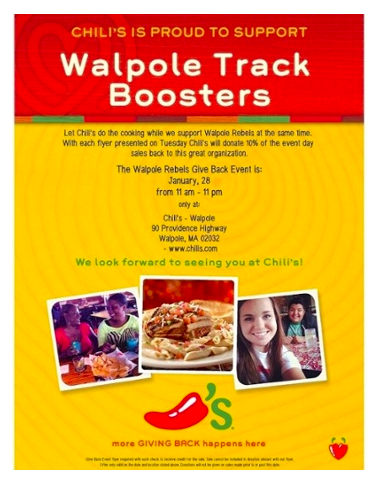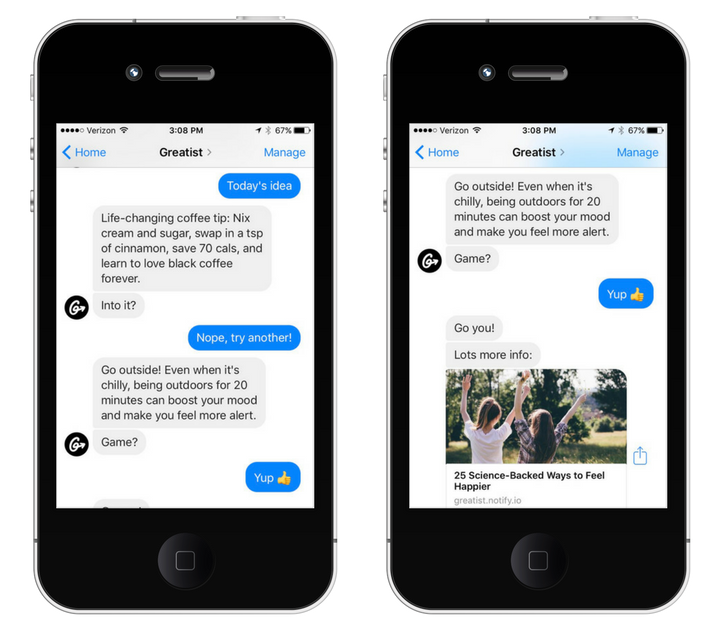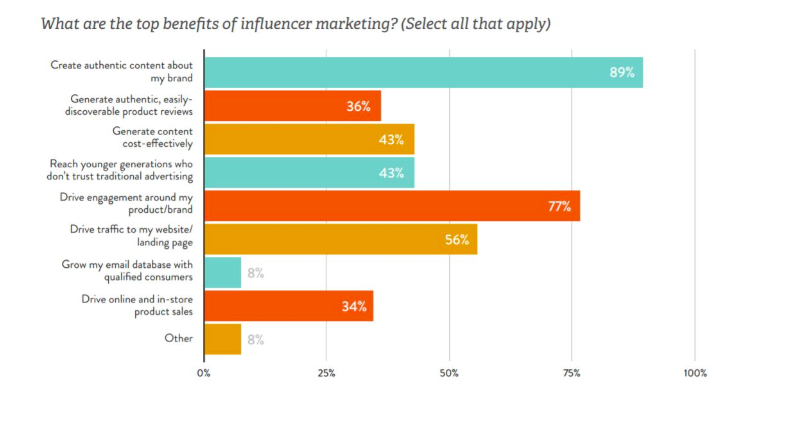Are you familiar with demand generation?
Whether you’re actively using it in your strategy or not, it’s an important part of finding – and keeping – the right customers.
In this article, I’ll go over six effective strategies you should be using for online marketing.

What We’ll Cover:
- What is a Demand Generation Strategy
- Strategies:
- FAQs
What Is A Demand Generation Strategy?
I’ll start this off nice and easy.
Wikipedia defines demand generation as “the focus of targeted marketing programs to drive awareness and growth in a company’s products and/or services.”
The short version: it’s how marketers generate demand for what a business is offering.
And as economics tells us, in order to justify the supply, there needs to be a demand.
That’s where marketers come in.
And it doesn’t just happen at the beginning of the sales cycle.
To be effective, demand generation marketing strategies must come into play and account for each touchpoint in the entire customer journey and sales cycle.
But really, they start long before a customer enters that cycle.
At its core, a demand generation strategy is about finding and fostering the right kinds of prospects and relationships, from initial reputation and awareness to final conversion.
Understandably, demand generation is often confused with lead generation.
But, while they often include similar strategies, they’re not exactly the same.
Mainly, lead generation strategies focus on acquiring new leads and collecting their information for future follow-ups. Once the lead is safely in an email, phone, or other database, the strategy is complete.
A demand generation strategy is about building awareness and interest in a product or service and nurturing customer relationships for the long-term.
So, now that we’re clear on what it is, let’s talk about how we go about it.
Demand Generation Strategy 1: Give Away Your (Best) Stuff For Free
At first read, this one probably seems a little counterproductive.
But in actuality, it’s one of the most reliable means most brands have for creating demand for their products or services.
Think about it: a customer is far more likely to walk away with something you give them for free then something they have to purchase, right?
But if that free thing you give them is high-quality and meets a need of theirs, they’ll be that much more likely to invest in your brand in the future. Essentially, it makes them happy and leaves a great first impression in their head.
Which is why it’s so important to only give away your very best work.
And in order to know what’s best, you need to have an in-depth handle on who your audience is.
You need to know their general demographic and form a solid buyer persona. You need to have conducted research and analysis into uncovering their particular pain points.
Then, you need to craft content – whether it be an ebook, whitepaper, webinar, free tool, etc. – that speaks directly to that customer and their point of need. It’s a great place to start developing a demand gen strategy.
As I stated above, this will not only get you more interested, potential customers, but it will help build trust between you and those customers.
And in today’s oversaturated, internet-heavy market, you can’t afford to take that trust for granted.
In fact, in a recent PwC study more than one in three ranked ‘trust in brand’ as among their top three reasons that influence their decision to shop at a particular retailer, other than price.
For the record, this is another area where the line between demand generation strategy and lead generation strategy is often blurred.
But if it’s lead generation, the content isn’t free – it’s locked behind a “gate”.
That gate is usually unlocked when a user submits their email or other information.
In order for it to be true demand generation marketing, that content or tool needs to be completely free.
No strings (or form submissions) attached.
Strategy #2: Prove Your Authenticity
What does that mean, exactly?
Easy – support a cause. Period.
Whether it’s sponsoring your community’s Little League or partnering with a national charity, do something that proves your brand is aware of and involved in something bigger than itself.
While this concept certainly isn’t new, the rise of the millennial generation has made the ability to prove a brand’s authenticity more important than ever.
So important that it can quite literally make or break a brand with that demographic.
The statistics around this are pretty astounding.
In fact, brand authenticity is second only to loyalty discounts in importance when choosing companies to support, and 63 percent of customers report that they would buy from an authentic brand.
And it goes beyond a one-time purchase. Let’s take a look at a demand generation marketing agency example.
A study put together by brand consultants Principals and the consultancy Brand Navigator, found a correlation between a company’s authenticity and the likelihood that customers become advocates for that brand. Advocating’s a big deal, and we’ll talk more about that momentarily.
That same study says authentic brands get more share of high-value customers. High value means repeat, lifelong customers.
In short: The current and future consumer is more interested than ever in the principle of doing good through their purchases and partnerships.
And they make that no secret. So it’s important to include this tactic in your demand generation strategy.
Forty-eight percent of millennials admit to supporting brands that “are active in supporting social causes.”
If you can convince them that by supporting your brand they’re really supporting something much bigger, you can gain a customer.
My advice: start local.
Especially if you’re a smaller company, start by doing something to help your community.
Here’s an example from Chili’s (see? Even national chains can stage local initiatives).

Demand Generation: prove your authenticity by supporting a cause or your community
They partnered with a local sports team and had team members distribute their flyers. Then, they donated 10% of all sales connected to the flyers back to the team.
Another piece of advice: don’t make that support a secret.
Run social media campaigns, include it in your emails, and put it all over your website. This type of demand generation marketing can go a long way.
Strategy #3: Establish Open Communication Early On
Along with authenticity, newer generations are increasingly looking for easy communication when it comes to choosing where they do business.
It’s no longer enough to talk at your customers.
Millennials especially are leaning on what we call the reciprocity principle: they expect an open, two-way relationship with brands.
And while this may seem like more work in the beginning, the payoff from this demand generation strategy can be huge.
How? Because Millennials are more likely than anyone to share their experiences – and influence other customers in the process.
If they have a great experience with a company, you can count on them to share it via their social media posts or review sites like Yelp.
But on the contrary, a negative experience – or lack of communication – can turn that same audience into staunch critics.
So do yourself a favor, and establish quick, open communication as early as possible.
The most effective way to do this?
Through social media.
It’s no secret that a digital and cross-channel presence is a must, and to determine the best channels for you will require research into where your target audience is spending most of their time.
There are also a few current trends brands should be paying close attention to in–demand marketing.
Messaging and chatbots, for example.
These days, many brands are making the attempt to connect with customers as soon as they hit their website through chatbot popups. Chatbot popups are an easy demand gen strategy that can really hook leads and turn them into sales.
That conversation is continued through the popularity of Facebook Messenger, which has quickly become the second most popular form of communication for customers when interacting with brands.

Facebook Messenger is a great way to stay in touch with customers
Another strategy you don’t want to ignore is live video.
While video is less interactive by nature, hosting a live video allows you to communicate with your customers through Q&As and other information sessions, and respond to incoming questions and comments in real-time. This type of demand marketing makes your brand more approachable and friendly.
A word to the wise: respond quickly to every incoming comment or question, especially those that are negative.
A well-timed, well-handled response can turn a disenchanted customer into a satisfied one.
Strategy #4: Influencer Marketing and Brand Advocacy
You’re probably not new to digital marketing, which means you’re no stranger to the idea of influencer marketing.
This is an especially effective strategy when it comes to spreading the word about your products or services.
Why? Because it encompasses those two all-important concepts: authenticity and trust.
Take a look at the graph below.

Demand generation: influencer marketing is essential
What’s the number one reason brands use influencer marketing? It creates more authentic content about their brand.
Another reason? It reaches a generation that doesn’t trust traditional advertising.
As we’ve seen, those sought-after traits can mean big business for brands.
How you go about influencer marketing will vary depending on your brand and your demand creation strategy.
If you’re running an e-commerce influencer campaign, you’ll start by finding influencers with a tool like BuzzSumo.
Launch the site, and type your main keyword into the search bar. I’ll use “jewelry” as an example.
When the results load, select Influencers from the top menu bar, and check (or uncheck) the boxes that apply in the left side menu.

Demand generation: use Buzzsumo to find influencers
The results will show you who the biggest influencers are in your niche.
Shoot for micro-influencers, anyone with 5,000 – 15,000 followers, and compile a list of 20-100.
Then, put together a package with your product sample and a quick one-sheet that introduces your company and product. This is a solid way to begin to implement your demand creation strategy.
Send that out to the influencers on your list and see who bites. As a demand generation strategy, using influencers has proven effective time and time again.
Influencer marketing for B2Bs works a little differently.
For that, you’ll need to focus on industry leaders and experts in your niche, and look to them to share and collaborate with you on content.
Of course, influencer marketing doesn’t come without its cost, which is why it’s important to identify brand advocates within your own customer pool.
These are people who have used and are (very) satisfied with your product or service, and are willing to push your brand on their social media accounts. An effective brand will use these advocates to their advantage and form a strategy for identifying them.
Strategy #5: Get Listed on Review Sites
Another one of the best demand generation marketing strategies is sign up for an account on a review site like Yelp.
Reviews are an undeniable factor in SEO, and do it one better by acting as social proof for your customers.
Users will type something like “top SEO companies” into Google, and see results like these on the first page:

Demand generation: review sites can put you on the first page of Google
…which will lead them to this page, where they can see the top-ranked SEO companies (coincidentally, Ignite happens to be #1).

Demand generation: list your company on review sites
So, not only do these review sites give customer’s confidence in your company, but they help you jump to the first page of Google.
Of course, you’ll want to start with basic review sites like Google My Business, Yelp, TripAdvisor, etc. to start collecting reviews and making a name for yourself.
But don’t ignore niche-specific sites like Capterra, Clutch.co, and G2Crowd.
Strategy #6: Set Up Similar and Lookalike Audiences
We all know how important remarketing is, right?
Good.
And as you know, with traditional remarketing you create an audience of people who have already visited your site or interacted with your brand.
Then, you load that audience into Google Ads or Facebook and target your ads to them specifically.
That’s super effective by itself, but there’s a way to expand your reach even further with a solid demand generation strategy.
In Facebook speak, we call it a Lookalike Audience. For Google Ads, it’s a Similar Audience.
They do the same thing: target an audience of people who have interests similar to those who have interacted with your brand or are on an existing remarketing list.

Demand generation: use Facebook Lookalike Audiences
This new audience shares characteristics with your existing custom audience and gives the brands the potential to double – even triple – the potential reach of your ad campaigns.
Combine that with the existing reach of Facebook and Google, and I don’t even need to tell you how beneficial this could be your brand.
This is such an important aspect of demand generation because it helps you cast your ad net to a pre-qualified audience, not a random one.
And remember, a big part of it is finding and filtering quality leads.
So if you haven’t already, I highly suggest you get started with Lookalike and Similar Audiences.
Strategy #7: Offer a Free Tool and Resource
Tying back into the first strategy of giving away your best stuff for free, offering a free tool, app, or resource can prove to be a very beneficial demand generation strategy.
Creating a free app or other digital resource is not cheap or easy. However, it can go a long way in creating an army of loyal customers because it helps to increase brand trust.
Make sure that the free resource, app, or other tool you are providing is useful and relevant. The people who download it will be more likely to come back to you for a purchase in the future.
Demand Generation Strategy FAQs
1. What are the benefits to having a demand generation strategy?
As previously mentioned, a solid demand gen strategy can help increase brand awareness and trust. It does so by doing the following:
- Boosting online visibility
- Connecting with your target audience
- Guiding leads throughout the buying process
- Optimizing conversions
2. Is it a one-time deal or do I need to keep at it?
Like all good business practices, it’s not a one-time strategy that can just be left on its own. You need to be hands-on by doing the following regularly:
- Re-evaluating your goals
- Producing new, high-quality content
- Repurposing older content
- Promoting your content
- Testing your strategies
- Analyzing data
3. Are there any other tools I can use to help my strategy?
In 2019, there are numerous online tools available to help with any stage of your sales process. A few tactics that you can incorporate into your strategy include:
- Upgraded content
- Research
- Surveys
- Podcasts
- Videos
- Webinars
- Influencers
- Offering a free app or tool
- Email marketing campaigns
- Giveaways
- Etc
Wrapping Up
Demand marketing is a lesser-known – but no less important – part of an overall marketing strategy.
Remember, you’re focusing on building awareness and interest in your product.
And unlike a specific strategy like lead generation, a demand generation strategy is a part of the entire buyer cycle, which is why many of the strategies above are the ones that will impact customers throughout the entire journey.
If you are unsure about going this route alone, you can always enlist the help of a marketing agency.
